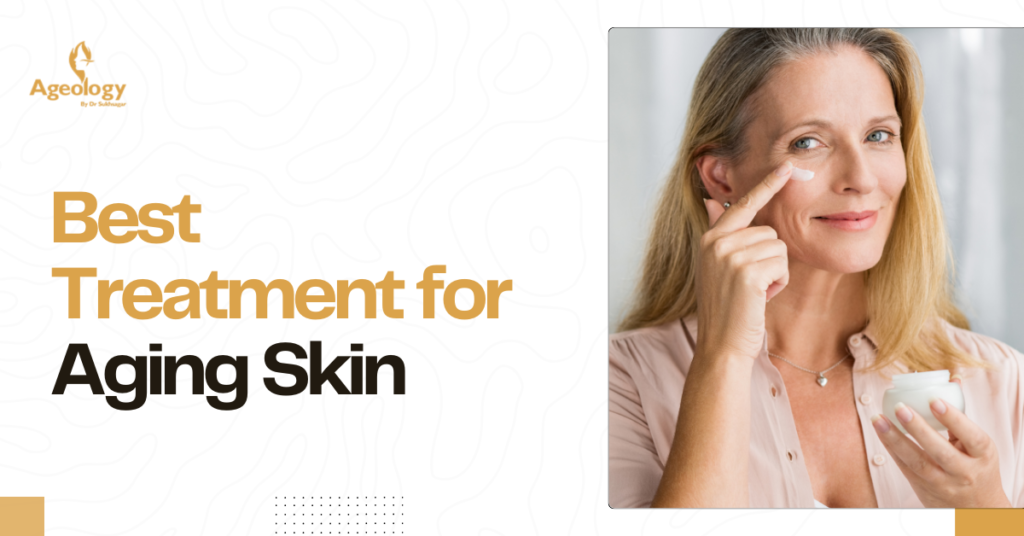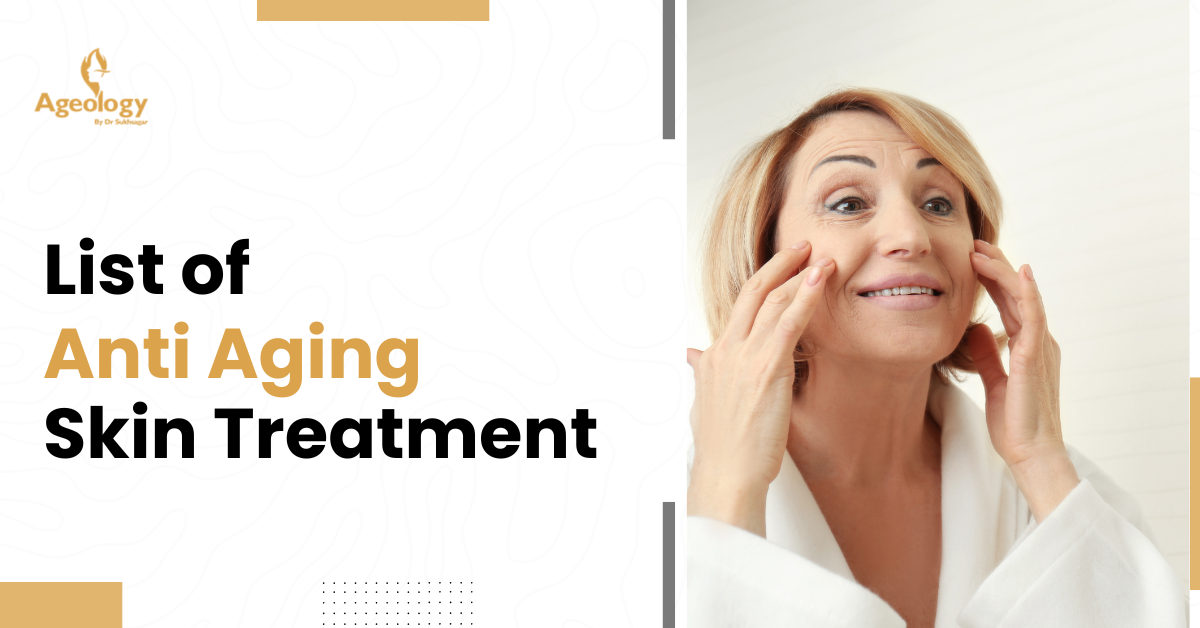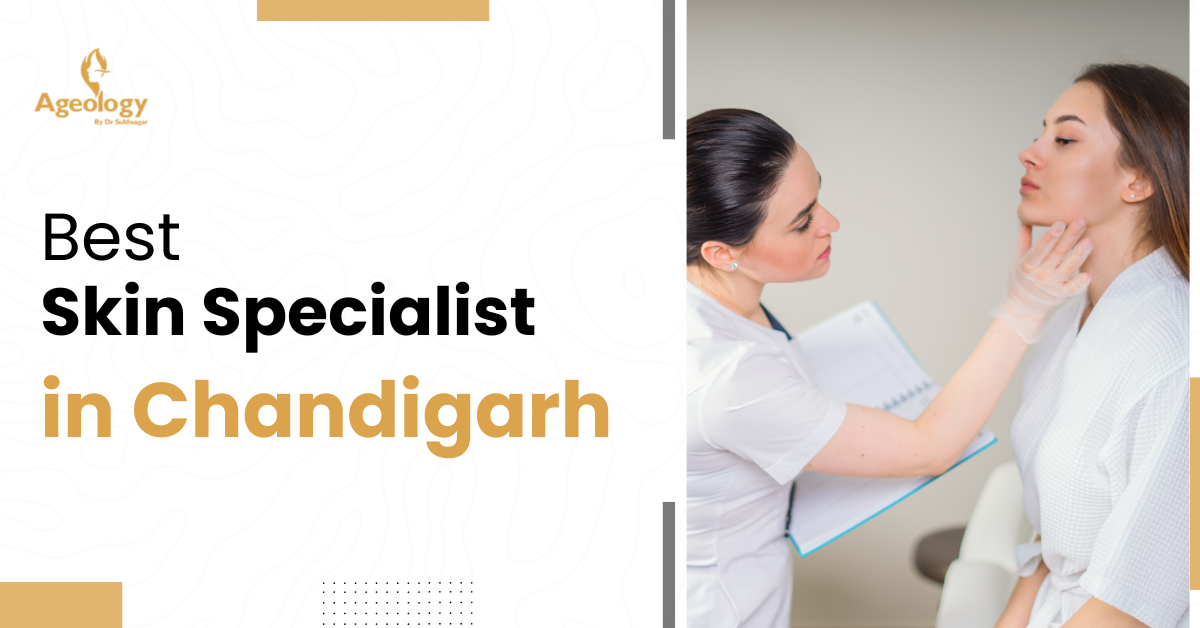Introduction:
We all know that aging is a natural process, but it doesn’t mean you have to live with dull or wrinkled skin. With the right care and treatment for your skin, you can reduce the visible signs of aging and maintain a healthy and glowing skin.
From fine lines to sagging skin, modern skincare solutions nowadays offer many ways to tackle these issues. In this blog, we’ll discuss what aging skin is, solutions of anti aging with Ageology, explain the anti-aging process, help you understand your skin type, and answer some common questions. Let us start.
What is Anti-Aging Skin?
If we talk about Anti-aging skin in layman terms, Anti-aging skin refers to taking steps to slow down or reverse the effects of aging on your skin. Anti-aging treatments focus on keeping your skin healthy, firm, and smooth by repairing and preventing damage. Over time, your skin changes due to:
Natural aging: Your body produces less collagen and elastin. It makes your skin thinner and less firm.
Sun damage: Too much sun exposure causes wrinkles, spots, and uneven skin tone.
Lifestyle habits: Smoking, stress, lack of sleep, and an unhealthy diet can speed up skin aging.
Solution: Anti-Aging Peel Treatments with Ageology
Anti-aging peel treatments are one of the most effective ways to rejuvenate aging skin. Ageology specializes in advanced peel treatments designed to target aging signs while improving overall skin health.
Anti-aging peels are chemical treatments that exfoliate the top layer of the skin. It promotes cell turnover and reveals smoother, younger-looking skin underneath. These peels use active ingredients like glycolic acid, lactic acid, and retinol to improve skin texture and tone.
Process of anti aging treatment:
Step 1: Skin Analysis
A professional at Ageology examines your skin type, concerns, and sensitivity to determine the most suitable peel.
Step 2: Preparation
Before the peel is applied, your skin is cleansed thoroughly to remove dirt and oils.
Step 3: Application of the Peel
The chemical solution is applied evenly to the skin. You might feel a mild tingling sensation as the solution works on your skin.
Step 4: Neutralization and Removal
The peel is neutralized and gently removed, revealing fresh, glowing skin underneath.
Step 5: Aftercare
A calming serum or moisturizer is applied to soothe the skin, along with sunscreen to protect it from UV rays.
You may also like: Acne Treatment in Chandigarh
How to Know Your Skin Type?
Knowing your skin type helps in choosing the right peel treatment. Here’s how to identify yours:
Dry Skin
-Feels tight and flaky.
-Benefits from hydrating peels like lactic acid.
Oily Skin
-Shiny with large pores.
-Responds well to glycolic acid peels for deep exfoliation.
Combination Skin
-Oily in the T-zone and dry elsewhere.
-Requires a balanced approach with mild peels.
Sensitive Skin
-Prone to redness and irritation.
-Needs gentle peels designed for sensitive skin.
Normal Skin
-Balanced and healthy.
-Can tolerate a variety of peels.
FAQ:
1. Are anti-aging peels safe?
Yes, when performed by trained professionals. They are safe and effective for most skin types.
2. How often should I get an anti-aging peel?
Typically, every 4-6 weeks. However, this depends on your skin’s needs and the type of peel used.
3. Can I wear makeup after a peel?
It’s best to avoid makeup for 24-48 hours to allow your skin to heal.
4. Will a peel make my skin sensitive to the sun?
Yes, peels can make your skin more sensitive. Always wear sunscreen after treatment.
5. Can peels treat deep wrinkles?
Peels work best for fine lines and surface wrinkles. For deep wrinkles, other treatments like fillers might be more effective.






